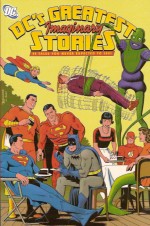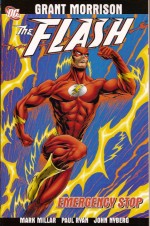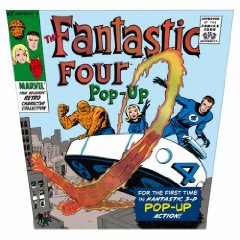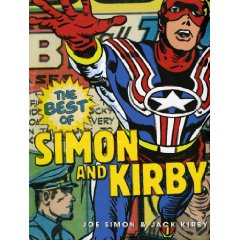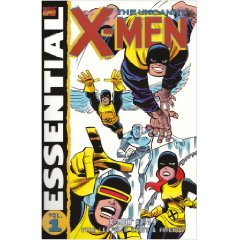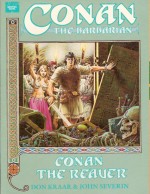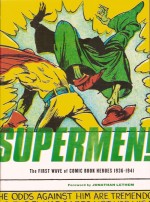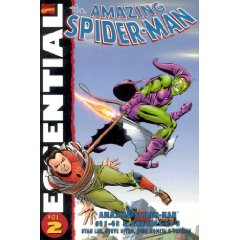
By Stan Lee, Steve Ditko, John Romita & various (Marvel)
ISBN: 978-0-78511-863-3
The second volume of chronological Spider-Man adventures sees the World’s Most Misunderstood Hero begin to challenge the dominance of the Fantastic Four as Marvel’s top comic book both in sales and quality. Steve Ditko’s off-beat plots and bizarre art had gradually reached an accommodation with the slick and potent superhero house-style that Jack Kirby was developing (at least as much as such a unique talent ever could), with less line-feathering, moody backgrounds and less totemic villains.
Although still very much a Ditko baby, Spider-Man had attained a sleek pictorial gloss. Stan Lee’s scripts were comfortably in tune with the times if not his collaborator, and although his assessment of the audience was probably the correct one, the disagreements with the artist over the strip’s editorial direction were still confined to the office and not the pages themselves.
Thematically, there’s still a large percentage of old-fashioned crime and gangsterism here. The dependence on costumed super-foes as antagonists was still finely balanced with thugs, hoods and mob-bosses, but those days were coming to an end too. When Ditko abruptly left the series and the company, the feared loss in quality – and sales – never happened. The mere “safe pair of hands” that John Romita (senior) considered himself blossomed into a major talent in his own right, and the Wall-Crawler continued his unstoppable rise at an accelerated pace…
This volume (reprinting Amazing Spider-Man #21-43 and Amazing Spider-Man Annual #2 and 3) kicks off with ‘Where Flies The Beetle’ featuring a hilarious love triangle as the Human Torch’s girlfriend uses Peter Parker to make the flaming hero jealous. Unfortunately the Beetle, a villain with a high-tech suit of insect armour (no sniggering, please) is simultaneously planning to use her as bait for a trap. As ever Spider-Man is in the wrong place at the right time, resulting in a spectacular fight-fest.
‘The Clown, and his Masters of Menace’ was a return engagement for the Circus of Crime (see Essential Spider-Man volume 1, ISBN: 978-0-7851-2192-3) and #23 was a superb thriller blending the ordinary criminals that Ditko loved to highlight with the arcane threat of a super-villain attempting to take over the Mob. ‘The Goblin and the Gangsters’ was both moody and explosive, a perfect contrast to ‘Spider-Man Goes Mad!’ in #24. This psychological thriller found a delusional hero seeking psychiatric help, but there’s more to the matter than simple insanity, as an old foe made an unexpected return…
Issue #25 once again saw the obsessed Daily Bugle publisher taking matters into his own hands: ‘Captured by J. Jonah Jameson!’ introduced Professor Smythe, whose robotic Spider-Slayers would bedevil the Web-Spinner for years to come, hired by the bellicose newsman to remove Spider-Man for good.
Issues #27 and 28 comprise a captivating two-part mystery featuring a deadly duel between the Green Goblin and an enigmatic new criminal. ‘The Man in the Crime-Master’s Mask!’ and ‘Bring Back my Goblin to Me!’ together form a perfect Spider-Man tale, with soap-opera melodrama and screwball comedy leavening tense thrills and all-out action. ‘The Menace of the Molten Man!’ (#28) was a tale of science gone bad and is remarkable not only for the action sequences and possibly the most striking Spider-Man cover ever produced but also as the story where Peter Parker graduated from High School.
In 1965 Steve Ditko was blowing away audiences with another oddly tangential superhero. ‘The Wondrous World of Dr. Strange!’ was the lead story in the second Spider-Man Annual, and spectacularly introduced the Web-Slinger to whole other realities when he teamed up with the Master of the Mystic Arts to battle the power-crazed wizard Xandu in a phantasmagorical, dimension-hopping masterpiece. After this story it was clear that Spider-Man could work in any milieu. Also reprinted from that impressive publication are more pin-ups of Spider-Man’s fiercest foes.
‘Never Step on a Scorpion!’ saw the return of that lab-made villain, hungry for vengeance against not just the Wall-Crawler but also Jameson for turning him into a monster. Issue #30 was another off-beat crime-thriller which laid the seeds for future masterpieces. ‘The Claws of the Cat!’ featured the hunt for an extremely capable burglar (way more exciting than it sounds, trust me!), plus the introduction of an organised mob of thieves working for the mysterious Master Planner.
The sharp-eyed will note that scripter Lee mistakenly calls their boss “The Cat” in one sequence, but really, let it go. That’s the kind of nit-picking that gives us comic fans a bad name and reduces our chance of meeting girls…
‘If This Be My Destiny…!’ in #31 concentrated on the Master Planner’s high-tech robberies and led to a confrontation with Spider-Man, as well Peter in College, the introduction of Harry Osborn and Gwen Stacy, and Aunt May on the edge of death. This saga is probably Ditko’s finest moment on the series – and perhaps of his entire career. ‘Man on a Rampage’ showed Parker pushed to the very edge of desperation as the Planner’s men made off with the only substance that could save Aunt May, with a berserk Spider-Man trying to locate them. Trapped in an underwater fortress, pinned under tons of machinery, the hero faced his greatest failure as the clock ticked down the seconds of May’s life…
Which in turn produced the most memorable visual sequence in Spidey history as the opening of ‘The Final Chapter!’ took five full, glorious pages to depict the ultimate triumph of will over circumstance. Freeing himself from the fallen debris Spider-Man gave his absolute all to deliver the medicine May needed, to be rewarded with a rare happy ending…
Kraven returned in ‘The Thrill of the Hunt!’ and so did another old foe in #35’s ‘The Molten Man Regrets…!’ a plot-light but inimitably action-packed combat classic, whilst a deranged thief calling himself the Looter proved little trouble in ‘When Falls the Meteor!’ In retrospect these brief, fight-oriented tales, coming after such an intricate and passionate tale as the Master Planner saga, should have been seen as some sort of clue that things were not going well, but the fans had no idea that ‘Once Upon a Time, There was a Robot…!’ which featured a beleaguered Norman Osborn assaulted by his disgraced ex-partner and his frankly bizarre murder machines, and the tragic comedy of ‘Just a Guy Named Joe!’ – as a hapless sad-sack gains super-strength and a bad-temper – were to be Ditko’s last arachnid adventures. When Amazing Spider-Man #39 appeared with the first of a two-part adventure that featured the ultimate victory of the Wall-Crawler’s greatest foe no reader knew what had happened – and no one told them…
In ‘How Green Was My Goblin!’ and the concluding ‘Spidey Saves the Day! (“Featuring the End of the Green Goblin!”)’ as it so facetiously and dubiously proclaimed, the arch-foes learned each other’s secret identities before the Goblin “perished” in a climactic showdown. It would have been memorable even it the tale didn’t feature the debut of a new artist and a whole new manner of story-telling…
By 1966 Stan Lee and Steve Ditko could no longer work together on their greatest creation. After increasingly fraught months the artist simply resigned leaving Spider-Man without an illustrator. Romita had been lured away from DC’s romance line and given odd assignments before settling with Daredevil, the Man Without Fear. Now he was given the company’s biggest property and told to run with it.
Issues #39 and 40 (August and September 1966) were a turning point in many ways, and inked by old DC colleague Mike Esposito (under the pseudonym Mickey Demeo) they still stand as one of the best Spider-Man yarns ever, heralding a run of classic tales from the Lee/Romita team that actually saw sales rise, even after the departure of the seemingly irreplaceable Ditko.
With #41, ‘The Horns of the Rhino!’ Romita began inking his own pencils and although the super-strong spy proved a mere diversion, his intended target, J. Jonah Jameson’s astronaut son was a far harder proposition in the next issue. Amazing Spider-Man #42 ‘The Birth of a Super-Hero!’, wherein John Jameson was mutated by space-spores and went on a rampage, was a solid, entertaining yarn but is only really remembered for the last panel of the final page.
Mary Jane Watson had been a running gag for years, a prospective blind-date arranged by Aunt May that Peter had avoided – and the creators had skilfully not depicted – for the duration of time that our hero had been involved with Betty Brant, Liz Allen, and latterly Gwen Stacy. In that last frame the gob-smacked young man finally realised that he been ducking the hottest chick in New York for two years!
‘Rhino on the Rampage!’ gave the villain one more crack at Jameson and Spidey, but the emphasis was solidly on foreshadowing future foes and building Pete and MJ’s relationship. This volume concludes with ‘…To Become an Avenger!’ (Amazing Spider-Man Annual # 3) as the World’s Mightiest Heroes offered the Web-Spinner membership if he could capture the Hulk. As usual all is not as it seems but the action-drenched epic, courtesy of Lee, Romita (on layouts), Don Heck, and Demeo/Esposito is the kind of guest-heavy package that made these summer specials a child’s delight.
This cheap and cheerful compendium is the ideal way to introduce or reacquaint readers with the early Spider-Man. The brilliant adventures and glorious pin-ups are superb value and this series of books should be the first choice of any adult with a present to buy for an impressionable child. Or for their greedy, needy selves…
© 1965, 1966, 2005 Marvel Characters, Inc. All Rights Reserved.

